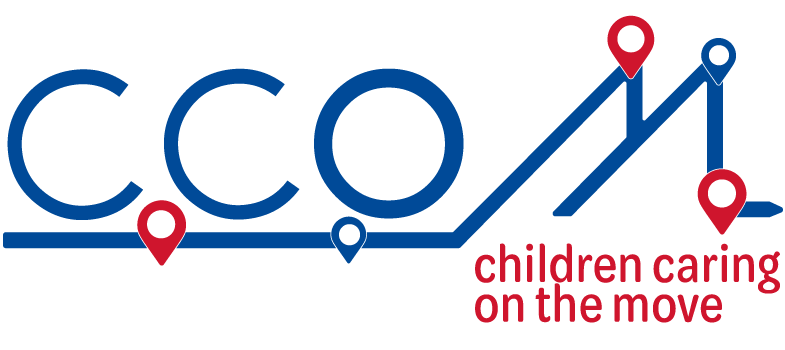3.2: Who does the caring?
The dominant ideas about what childhood should look like, which you read about in Section 3.1, also influence how particular care relationships are framed. When we think about the care of children and young people, the focus is often on the role of adults caring for dependent children, such as the care a parent would give a child. As a social care practitioner, you may think about the corporate parenting responsibilities the State provides in loco parentis. In this formulation of ‘care’, care is done by adults for children and young people.
However, as you read in Section 2, care comes in many complex forms and an often-neglected form of care is that provided by young people. Research within the wider field of migration has shown that young people often have significant caring roles and responsibilities within the family, such as pitching-in with domestic work (Rogoff et al., 2014), helping to support the family finances (Heidbrink, 2014) or acting as a young translator or interpreter (Crafter and Iqbal, 2022). Of course, there is also a large body of research outside the field of migration that focuses on the role of young carers and the adult-like roles they sometimes engage with for family members (O’Dell et al., 2010).
The Children Caring on the Move project, though, was keen to explore another aspect of ‘care’, which was young people’s care of each other. If young people were no longer being cared for by their immediate kin, what caring practices and care relationships were they engaged in? Drawing on empirical evidence of children’s caring practices (Rosen et al., 2021), this literature conceptualises children as social actors actively caring for and in their communities. It suggests that whilst migration may be unusual or traumatic for some, it is the socio-political precarity under which children find themselves that makes their lives difficult (Chase, 2013).
 Activity 3.3: Thinking about young people’s care of each other
Activity 3.3: Thinking about young people’s care of each other
Now, read the following quote from a young person we have named ‘Sara’ (the dots reflect short pauses in his speech), who brought along a picture of her friend to her care object interview. She was asked to describe her relationship with her friend. As you read her quote, think about how this might be framed as a caring relationship.
‘Okay. First, we know each other in Belgium for one year there because we stayed there to try to come here for one year…And when we try we came here by the lorry, the truck, the pickup. And when we need to go there, for example, sometimes if I am not feeling well, my friend doesn’t leave me and try to come to here. She stay with me. And she stay with me and try to the next day with anything like when we are tired, because we are tired we have to work for long hours. So she was always with me. Yeah. And she’s still with me now.’
INTERVIEWER: Can I ask one more thing? And please, only answer if you feel comfortable to, Sara, okay? Can you maybe tell us a bit about that support that you’ve given each other? So what did it look like, you know, when you were moving together to the UK? How did you support each other?
‘Everybody have like two people in Belgium when they are travelling. But when you go to try and to find the truck, first you need to go along journey from the place you stay. And then there is like walking in the like jungle. And we always go in the night-time. And if you are just by yourself, it’s scary. And we are always together and we go there. And even sometimes they will say like… the people say, “Come,” just one of us. If there is not enough space, they call one of us and then to try to the truck in her, the truck. And she never leave me. She always wanted to stay with me because she didn’t think just for herself. She think about me as well. Yeah, a lot of times she did like that.’
Discussion
The relationship between Sara and her friend reflects several of the ‘phases of care’ and their associated moral elements that you read about in Section 2.1. Sara repeatedly describes moments of feeling ‘cared about’ through the attentiveness of her friend, such as when she says ‘…if I am not feeling well, my friend doesn’t leave…’. Sara predominantly frames herself as the ‘care receiver’ and responds by recognising the empathetic concern shown by her friend, ‘She always wanted to stay with me because she didn’t think just for herself.’ It is hard to know how much this was reciprocated by her friend because we only have Sara’s narrative, but there is a sense of solidarity amongst the two friends which has endured as a care relationship over time.
3.1: The ‘normal’ versus ‘non-normative’ childhood

